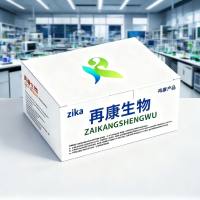Using BRET to Detect Ligand-Specific Conformational Changes in Preformed Signalling Complexes
互联网
495
Bioluminescence energy transfer (BRET) has become a powerful tool to study protein–protein interactions and conformational changes among interacting proteins. In particular, BRET assays performed in living cells have revealed that heptahelical receptors (7TMRs), heterotrimeric G proteins and their proximal effectors form constitutive signalling complexes. BRET technology has also allowed us to demonstrate that these multimeric protein arrays remain intact throughout initial stages of receptor signalling, thus providing a platform for direct transmission of conformational information from activated receptors to downstream signalling partners. A clear example of the latter are the distinct intermolecular re-arrangements undergone by 7TMRs and G protein subunits following activation of the receptor by different ligands. Here we present protocols describing the type of BRET assay that has been used to reveal the existence of constitutive signalling arrays formed by 7TMRs and proximal signalling partners as well as the ability of complex components to undergo ligand-specific conformational changes.








